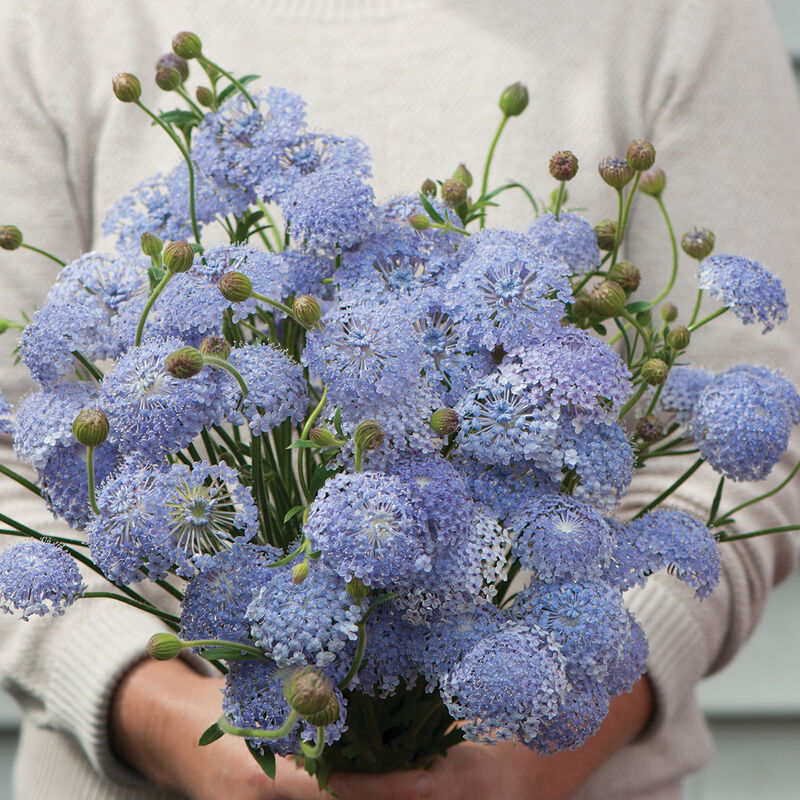Olive Seed Company
Lace Flower 'Lacy Lavender Blue'
Lace Flower 'Lacy Lavender Blue'
Couldn't load pickup availability
Lacy Lavender Blue Didiscus (Trachymene coerulea)
A true delight for both gardeners and florists, Lacy Lavender Blue Didiscus produces domed umbels of soft, powdery lavender-blue blooms that seem to float above the garden on slender, branching stems. With minimal foliage, each stem carries an airy, elegant presence, making it ideal for weaving between other plantings or adding lightness to bouquets.
Blooming from mid-summer into early fall, this mildly fragrant annual is rich in nectar, drawing in bees, butterflies, and other pollinators. Reaching up to 36" tall, it offers excellent vase life, graceful structure, and a dreamy hue perfect for cool-toned arrangements and romantic cottage gardens.
DETAILS:
QTY: 100
TYPE: Annual
SITE: Sun/Part Shade
DEPTH: 1/4"
GERMINATION: 14-21 days at 21-22°C
HEIGHT: 24" - 36"
MATURITY: 95 - 100 Days
SPACING: 6-12"
PINCH: No
HOW TO GROW:
Direct Sow (recommended): Didiscus seeds are best direct sown after the last frost, as the plants dislike root disturbance. Sow seeds ¼" deep and be sure to cover them well, as darkness aids germination. Keep the soil evenly moist until seedlings emerge, which typically takes 10–20 days. For a longer bloom window, successive sowings every 2–3 weeks from spring through early summer are recommended.
Transplanting (alternative): While transplanting is possible, it should be done with care. If you start seeds indoors, sow them 4–6 weeks before the last frost in deep individual pots (such as peat or coir) to minimize root disruption. Provide bottom heat to encourage germination, and harden off plants carefully before transplanting outdoors.
Pinching: Pinching is not typically necessary for didiscus, as the plants naturally form a strong, upright growth habit.
Soil Preference and Watering: Didiscus prefers full sun and well-drained soil. Keep the soil consistently moist, but avoid overwatering. Blooms appear approximately 90–100 days from sowing.
Fertilizing: Fertilizing is not required for didiscus. It performs best in average to lean soil.
Harvesting: Didiscus blooms are ideal for cutting gardens, adding a delicate, lacy texture to bouquets. Harvest the stems when the flowers are fully open. For a longer vase life, cut stems in the early morning or late evening.
Shipping & Returns
Shipping & Returns

-
Free Shipping
Free Shipping on all orders in Canada over $125.00

